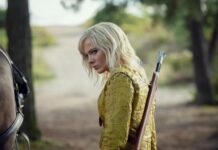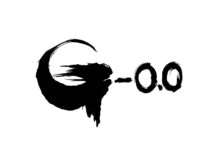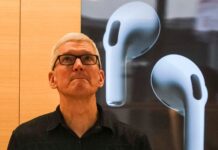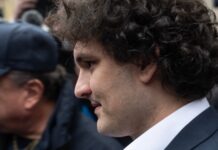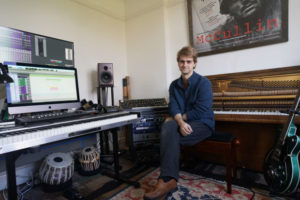
Behind the sound desk at the Old Vic's adaptation of Oscar-winning film Fanny & Alexander
Composer Alex Baranowski and sound designer Tom Gibbons used a Digico console and a d&b audiotechnik PA supplied by Stage Sound Services for the Old Vic’s recent production of Fanny & Alexander. Simon Duff took to the capital to take in the show and find out how the system performed on the night…
Fanny & Alexander is a 1982 Ingmar Bergman film regarded as a masterpiece of European independent cinema. For the 2018 London Old Vic theatre production, BAFTA award-winning writer Stephen Beresford and Old Vic associate director Max Webster have taken on the challenge of re-interpreting the film for the stage.
With a stellar cast led by Penelope Wilton and Michael Pennington, the production includes a modern, evocative, and haunting contemporary classical score by Alex Baranowski. The plot is set in the the gilded glamour of 1900s Sweden. Siblings Fanny and Alexander’s world is turned upside down when their widowed mother remarries a corrupt local bishop. As creative freedom and rigid orthodoxy clash, a war ensues between imagination and austerity in a magical study of childhood, family and love.
Baranowski is a London based composer, trained at Sir Paul McCartney’s Liverpool Institute for Performing Arts (LIPA) and nominated for a Tony award for The Cripple of Inishmaan on Broadway. He won a Music + Sound Award 2014 for his score to BAFTA nominated film McCullin, and his ballet adaptation of 1984 for Northern Ballet recently won the prestigious South Bank Award for dance after a sold out run at Sadler’s Wells. Other collaborations with directors in theatre include Oscar winning Danny Boyle (Frankenstein), Rupert Goold (Earthquakes In London), Sir Nicholas Hytner, (Hamlet) at the Royal National Theatre, and numerous productions for West End and Broadway.
A major inspiration and initial influence for Barnowski when creating the original score for Fanny & Alexander was Schumann’s piano Quintet op.44. He says : “That thoughtful, deeply emotional piece opens the Bergman film and Max and Stephen were both keen that I be guided by the spirit and intensity of that writing as I approached my score. That said, they were both really keen that I not be too influenced by the original film. Indeed that goes for all aspects of the production. When Stephen acquired permission to do the theatrical version, the Bergman estate had a proviso that Stephen should create his own vision for Fanny & Alexander.”
Work on the production for Baranowski started in autumn of 2017 with initial meetings and briefs from Max Webster. Back in his studio, scoring demos and ideas began in earnest. Based around Pro Tools HD 2018, PSI Audio A 17-M Active monitors and a host of choice outboard, Baranowski’s studio is a top of the range set up. Commenting on the PSIs, he says: “For orchestral work they are extraordinary near field speakers and they deliver a level of performance and accuracy that very few two-way designs can match, and which would also shame a great many three-way offerings. For serious high-end monitoring they are my absolute favourite.”
The sample libraries that he works with in his studio include Spitfire Audio’s Chamber Strings. Baranowski enthuses. “It’s a fantastic library. 16 of the finest string players, playing the finest instruments via the finest signal path in The Hall at Air Studios. A superb collection of string articulations and techniques.”
He also uses The Complete Olafur Arnalds Collection, part of Spitfire Audio’s Chamber Evolutions series, a collection of sounds with celebrated Icelandic composer, Ólafur Arnalds, which introduces his signature “Waves” samples that Baranowski used for ghostly type cues in Fanny & Alexander. In addition, he draws upon Cine Samples’ Tina Guo, electric and acoustic Cello library.
For his piano library samples he utilises Imperfect Samples, one of many piano libraries in his collection. This one has a soft character that worked well for demos played in rehearsals. All contributed to the sonic palette used on Fanny & Alexander.
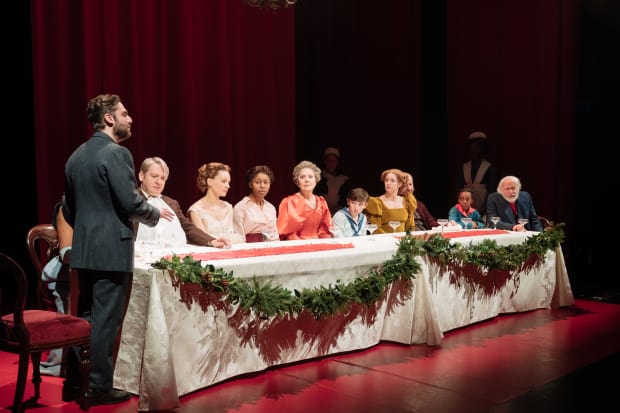
Choice outboard gear in his studio includes Neve 1073 mic pre-amps and EQ, a Universal Audio Apollo Twin interface, TLA Audio Valve compression and in the microphone department Royer Labs R-121 ribbons mics, DPA 4006’s and Sontronics Aria valve mics, are the order of the day.
Working with sound designer Tom Gibbons, rehearsals began at the start of 2018 before 10 days of technical rehearsals on the Old Vic stage itself. Onsite composition was carried out and in total he wrote and produced some 62 cues, with score parts produced for the two-person band line up, comprising of Harry Napier, cello, and Kathrine Rockhill, piano, both of whom perform live positioned in one of the audience boxes overlooking stage and stalls.
The two band members took cues off a click track when needed, fed by QLab and the Pro Tools
pre-records. However, for most of the cues the band did not work with a click track, taking their timings from tempo and on stage visual cues.
Final mix formats and stems were approved, running at 48kHz, 24 bit Wave files with stems sent to sound designer Gibbons, who in turn worked on QLab and Ableton Live, producing his sound design at FOH, which was mixed by Michael Woods, working with with Amanda Davies, sound operator.
Gibbons trained at the Central School of Speech and Drama in Theatre Sound and is resident sound designer for the international physical theatre company Parrot in The Tank. Recent work includes The Crucible (New York), Anna Karenina (Manchester Royal Exchange) and A View From the Bridge (Young Vic).
The FOH audio for Fanny & Alexander is run on a Digico SD10 T with Steathlcore, running all audio via MADI at 48kHz, 24 bit, supplied by Stage Sound Services. The Main PA, also supplied by Stage Sound Services, consists of six d&b Y7P on the proscenium with four d&b Y subs, a centre array of seven d&b Y8 and auditorium delays and fills, which are mainly d&b E8s and E3s with six E0s as front fills.
On-stage there are four Meyer Sound UPAs (Old Vic stock) and four EM Acoustics 81s, as well as a d&b B2 sub. microphone used on the cast are 19 Shure UR1M packs with DPA 4061s.
“Apart from the six Y7Ps on the proscenium and two of the Y Subs, the whole PA is from Stage Sound Services,” says Gibbons. “The Old Vic purchased the 4061s as they need for each shows, with a small number coming from old show stock. For example, we had an acoustic guitar on an existing 4061.”
Baranowski is currently working on original music inspired by his Polish grandparents who came to the UK after WW2. His grandfather was a musician and published poet who wrote about his experiences, setting some of them to music.
He concludes: “I’m in the process of creating my own musical pieces with the instruments he left me in his will. He ran a choir well into his nineties so I have some quarter-inch tapes of those that I will use. I’ve also got a film coming out in the coming months, which is a feature documentary about Rudolph Nureyev, which should be really beautiful. We recorded the score in Abbey Road last year.”
Source: mi-pro.co.uk




